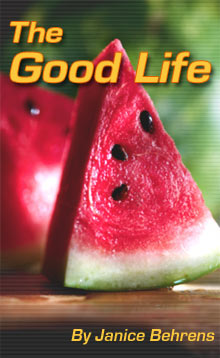 It’s been nearly a year since I wrote about Nintendo’s new software directed at helping us hang onto our mental faculties a little longer. At that time I suggested that if we lead sufficiently challenging lives, perhaps we don’t need external aids. Either way, we do need to keep those brain cells humming.
It’s been nearly a year since I wrote about Nintendo’s new software directed at helping us hang onto our mental faculties a little longer. At that time I suggested that if we lead sufficiently challenging lives, perhaps we don’t need external aids. Either way, we do need to keep those brain cells humming.
After a challenging year post-surgery and some complicating factors, I really began fearing for my brain. It seemed that most essential, most cherished, most defining part of me was letting me down. And I was scared.
It goes beyond simply being annoyed with not remembering the name of a person we’ve known for years or a song title or the year we started a particular job. Frankly, It’s not much consolation when the elusive bit of info surfaces hours or days later. The embarrassment usually lasts longer than that. It’s bad when simple math calculations seem to take forever. Or a person can’t remember the turnoff to a favourite location.
A person can’t worry about their memory and mental function without making the leap to Alzheimer’s disease and feeling threatened. Losing your keys is okay and not a reason for concern. Not knowing what to do with the keys is. I think, as least for now, I can rule out the big A.
we’re also admonished to use it or lose it. Do crossword puzzles. Take a different route home. Learn a second language. Try Sudoku.
When I took the ?Find all the H’s quiz? in You: Staying Young and failed to rank, that was the limit. I had a chance to add a Nintendo DS combo to my Christmas list and I jumped at it. The combo included the compact unit, which opens and has two screens, a stylus, carrying case, and three games: Brain Age, Brain Age2, and Flash Focus.
The software was developed by Dr. Ryuta Kawashima and aims at exercising the prefrontal cortex of our brains: the part that ?determines how we use stored knowledge in practical situations. It is the foundation of creativity, memory, communication, and self-control.?
Through a combination of daily training, encouraging words, progress graphs, and timed exercises I am able to work my way through the software. The Stroop test was a noisy hit at Christmas when family members tried to say the name of the displayed colour rather than the word for the colour as it flashed on the screen. Those results plus the timed score of 20 simple addition/subtraction/multiplication problems establishes a person’s brain age. The goal is getting it down to that of a 20-year-old brain. My best so far is 32.
As I turn up day after day for the training, new challenges and harder versions of old challenges are revealed to me. The software tracks my attendance record, time of the day (which also affects results; a tired brain performs poorly), scores, and top three records in each game. Graphics illustrate the overall speed at which these games are completed (walking, bicycle, car, train, jet). Reading aloud is the most taxing activity for the prefrontal cortex. Add the pressure of time and obscure literary excerpts and you’ve got a challenge. I love some of the games and am ticked off by others but the competitive streak in me wants to keep bettering my score and my time. Finally I can win at Sudoku. I’m lovin? this and haven’t even tried the other two software games. Finding the balance between Brain Age and real life is now the challenge, from where I sit.

